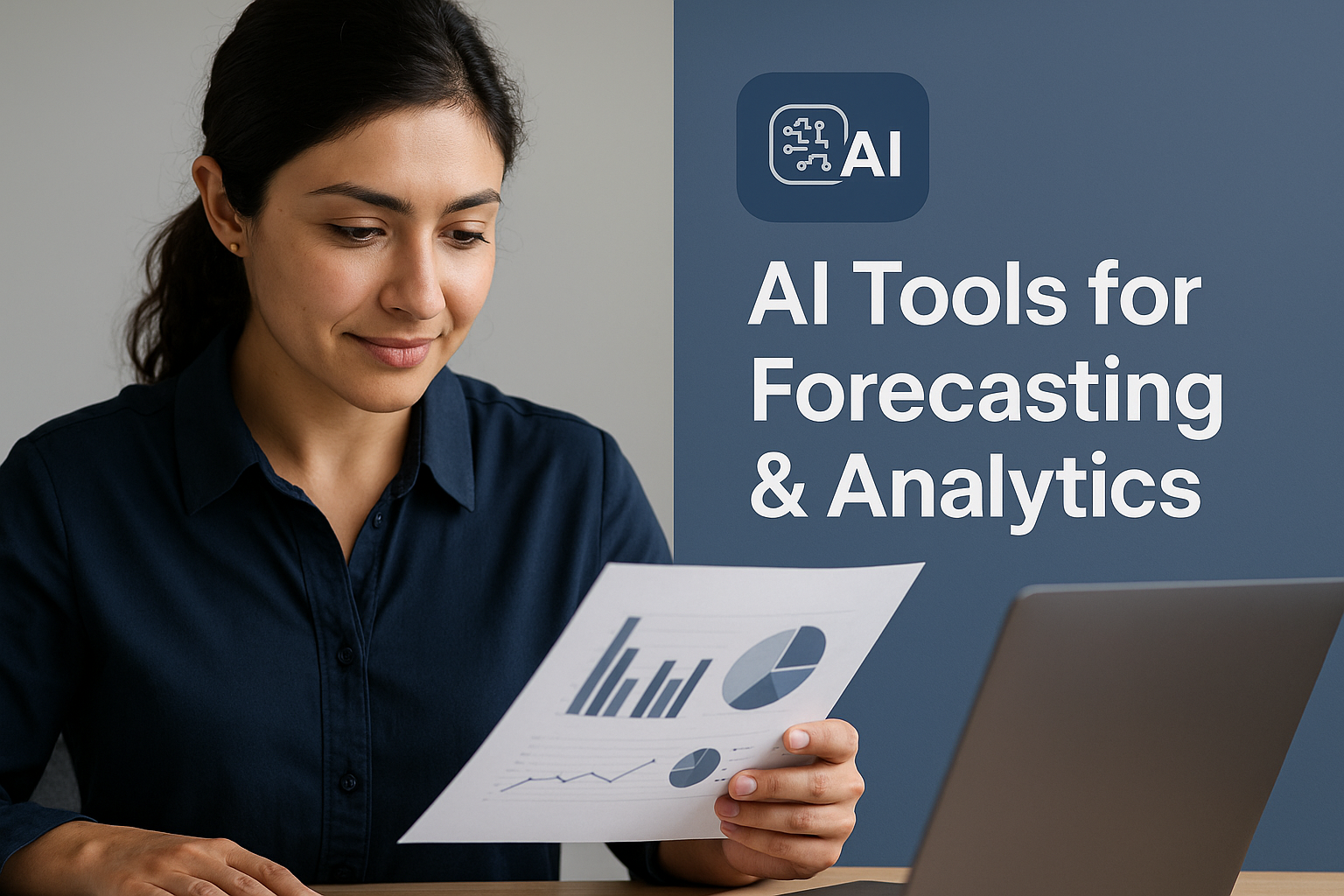
July 30, 2025
sam@salesminded.ai
Forecasting is the lifeblood of any sales organization. The accuracy of your forecast influences everything: headcount planning, budget allocation, marketing spend, production schedules, and investor confidence. Yet, despite its importance, most forecasts are wrong.
For decades, sales forecasting has been a blend of educated guesses, gut instinct, and spreadsheets. Deals slip, CRM data goes stale, and reps unintentionally (or intentionally) bias their numbers. The result is a process that often produces more anxiety than clarity.
Automated AI forecasting tools are rewriting the rules. By leveraging real-time data, historical trends, and machine learning, they turn what was once an imprecise art into a science with measurable accuracy. For professional salespeople, these tools don’t just help leadership plan better—they empower you to manage your pipeline with unprecedented precision.
Why Traditional Forecasting Fails
Before diving into AI, it’s important to understand why manual forecasting has been broken for so long:
- Overreliance on CRM updates: Forecasts are only as accurate as the data reps input, and CRM hygiene is notoriously inconsistent.
- Subjective deal stages: One rep’s “90% commit” is another’s “50% best case,” making aggregation unreliable.
- Static data: Forecasts built weekly or monthly lag behind real-time buyer behavior.
- Human bias: Sellers unintentionally overestimate or sandbag to manage expectations.
- Complexity of modern sales: With longer buying cycles, larger committees, and multi-threaded deals, static forecasting models can’t keep up.
AI doesn’t remove the human element—it complements it. By continuously analyzing live data, AI tools create a forecast grounded in reality, not intuition.
How Automated AI Tools Transform Forecasting
AI forecasting platforms fundamentally shift how forecasts are created, monitored, and acted upon. Here’s what they do differently:
1. Real-Time Data Aggregation
Instead of relying on manual CRM updates, AI tools pull live data from email threads, call logs, meeting notes, and buyer interactions. Your forecast reflects what’s actually happening in deals right now—not what was last entered.
2. Predictive Deal Scoring
AI assigns probability scores to deals based on historical win/loss patterns, engagement levels, and stage velocity. These scores adjust automatically as buyer behavior changes, giving you an always-current view of deal health.
3. Pipeline Risk Detection
Automated risk alerts flag deals with low activity or red flags like shrinking deal size, delayed responses, or stalled next steps. You can address issues early instead of being blindsided at quarter-end.
4. Scenario Modeling & Forecast Shaping
Advanced platforms allow you to run “what-if” scenarios. Want to see the impact if a major deal slips to next quarter or if a new rep accelerates? AI can model outcomes instantly and provide contingency plans.
5. Continuous Machine Learning
Unlike static spreadsheets, AI forecasting models improve over time. Every win, loss, and pipeline movement feeds the algorithm, refining accuracy quarter after quarter.
The Payoff for Sales Professionals
For frontline sellers, the benefits are immediate:
- Less Admin, More Selling: Automated tools cut manual data entry, freeing up time to work deals.
- Clearer Coaching: Managers can see which deals are truly at risk and focus coaching where it counts.
- Confidence in Your Pipeline: You know exactly where you stand, removing the anxiety of over- or under-committing.
- Higher Win Rates: Early detection of deal risk allows you to re-engage buyers and course-correct before it’s too late.
Top 5 Automated AI Forecasting Tools – In-Depth Reviews
1. Clari – The Revenue Operations Powerhouse
Clari has become almost synonymous with AI-driven forecasting. It integrates deeply with CRMs, email, calendar, and call systems, creating a live “revenue cockpit” for your entire sales org.
- Strengths:
- Real-time visibility across the entire revenue funnel.
- AI-driven deal scoring based on activity and historical patterns.
- Powerful scenario modeling to plan for best case, commit, and upside.
- Integrates with finance and marketing for a true RevOps view.
- Standout Feature: Clari’s “Deal Health Score” looks at every buyer and seller interaction, weighting them to predict close likelihood. It’s like having a data scientist assigned to every deal.
- Best For: Enterprise and mid-market sales teams with complex, multi-threaded deals.
- Insight: Clari doesn’t just forecast—it creates organizational alignment. For reps, it provides a crystal-clear view of which deals to prioritize. For leadership, it delivers board-level confidence.
2. InsightSquared – Predictive Analytics Meets Sales Forecasting
InsightSquared built its reputation on analytics, and its forecasting tool lives up to that legacy. It’s less about “gut feel” and more about actionable intelligence.
- Strengths:
- Granular reporting that ties forecasts to historical data.
- AI-driven pipeline inspection that flags data anomalies.
- Customizable dashboards for reps, managers, and execs.
- Integrates with marketing automation for full-funnel forecasting.
- Standout Feature: Predictive deal scoring combined with detailed historical benchmarking allows you to see not only if a deal will close, but how it compares to similar wins and losses.
- Best For: Teams that value deep analytics and want forecasting tied to data storytelling.
- Insight: InsightSquared gives you “X-ray vision” into your pipeline. For reps, this means no more guesswork—just data-backed clarity.
3. BoostUp.ai – AI-First Forecasting and Risk Detection
BoostUp.ai takes a “no human bias” approach, pulling in engagement data and running machine learning models to create highly accurate forecasts.
- Strengths:
- AI-driven deal health and risk scoring.
- Natural language processing to analyze call notes and emails.
- Highly accurate commit vs. best case forecasting.
- Clean, intuitive interface designed for rep adoption.
- Standout Feature: BoostUp’s “Engagement Index” evaluates buyer and seller activity to measure true deal momentum. Deals without recent multi-threaded engagement get flagged automatically.
- Best For: Teams that want AI-driven, activity-based forecasting with minimal manual input.
- Insight: BoostUp is perfect for reps who hate admin work. The AI does the heavy lifting, letting you focus on building relationships and closing deals.
4. Aviso AI – Forecasting Plus Win Optimization
Aviso AI is a forecasting tool with a twist: it doesn’t just predict outcomes, it actively helps you influence them. Its AI models analyze buyer signals and recommend next best actions to improve win rates.
- Strengths:
- AI forecasting with 90%+ accuracy claims.
- Real-time pipeline health scoring and risk alerts.
- Guided selling recommendations based on deal signals.
- Scenario planning for multiple forecast outcomes.
- Standout Feature: Aviso’s “AI Nudges” proactively suggest what actions you should take on deals to move them forward, blending forecasting with deal coaching.
- Best For: Sales orgs that want forecasting and enablement in one platform.
- Insight: Aviso’s secret weapon is turning forecasts into action plans. For reps, it’s like having a coach in your pocket telling you what to do next.
5. Revenue.io – Call Intelligence Meets Forecasting
Revenue.io (formerly RingDNA) brings AI call analytics into forecasting. By analyzing conversations alongside CRM data, it gives a more complete view of deal health and pipeline predictability.
- Strengths:
- Combines conversation intelligence with AI forecasting.
- Real-time insights from calls and meetings.
- AI-driven pipeline health and risk detection.
- Deep Salesforce integration.
- Standout Feature: Revenue.io can detect “intent signals” from sales conversations and feed that data into its forecasting engine. Deals with strong buying signals get weighted automatically.
- Best For: Teams that rely heavily on phone and video selling and want to combine call insights with pipeline forecasting.
- Insight: For reps, this means every conversation you have feeds the forecast in real-time. The AI listens for buying cues you might miss and adjusts predictions instantly.
Implementing AI Forecasting Successfully
Rolling out these tools isn’t just a tech project—it’s a cultural shift. To succeed:
- Start With Clean Data: AI amplifies whatever you feed it. Fix CRM hygiene first.
- Integrate Deeply: Connect email, calendar, call tools, and contracts for a complete data picture.
- Drive Adoption: Train reps on how the AI scores deals so they trust the insights.
- Use Insights for Coaching: Don’t just look at the forecast—use deal health scores to coach proactively.
- Iterate and Refine: AI gets better over time, but only if you adjust stages and definitions based on real-world learnings.
The Future of Sales Forecasting
In 3–5 years, manual forecasts will be a relic. AI will deliver rolling, real-time forecasts with 90–95% accuracy. Instead of debating numbers in pipeline meetings, sales teams will spend their time acting on AI insights to remove risk and accelerate deals.
For professional salespeople, that future starts now. The reps and leaders who embrace AI forecasting today will not only hit quota more consistently—they’ll have a strategic edge their competitors can’t match.
Final Thoughts
AI forecasting isn’t just about numbers. It’s about creating confidence—for leadership, for reps, and for customers. By combining real-time data with machine learning, these tools transform forecasting from a stressful, subjective chore into a precise, actionable advantage.
If you’ve ever sat in a QBR sweating over your commit number, you already know why this matters. AI forecasting tools give you clarity, accuracy, and control. And in sales, that’s not just valuable—it’s everything.

%20(1)%20(2).png)